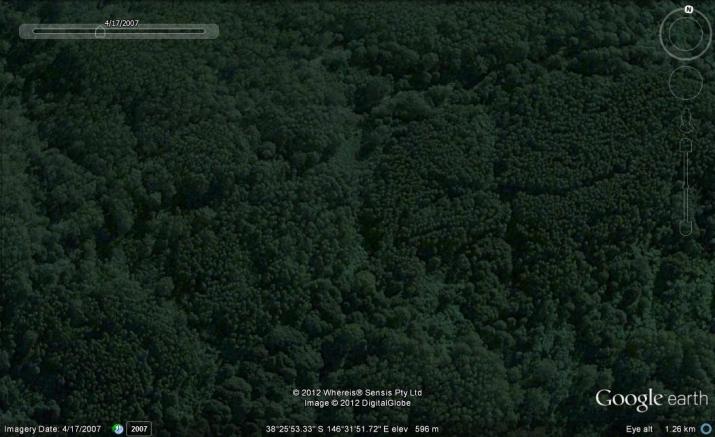One area of the park that the Friends of Tarra Bulga are monitoring carefully is an area that has been set back by the occurrence of the Black Saturday bush-fires. The site is on a north-west facing slope and is an area of about 10 ha.It was added to the National Park in 1986 which was part of the process of the merging of the Bulga Park and Tarra Valley reserves. At that time it was in very poor condition, having being abandoned after being cleared for farming. It was reportedly covered in blackberries, introduced grasses and native colonisers such as Fireweed Groundsel and Bracken Fern.
After its addition an effort was made to return the site to what land managers believe was its original vegetation type of wet schlerophyll forest with Eucalyptus regnans (Mountain Ash) as the dominant canopy species. The trees were planted and were successfully growing until they were all killed by the 2009 fires. Sadly although the new trees were tall and well established they had not reached the point where they were flowering and setting seed (thought to be 15-20 years), as a consequence virtually no new tree seedlings germinated on this site after the fire. Monitoring by the friend’s group and park’s staff after the fires identified this issue and efforts were made to plant new trees while the site was accessible, unfortunately they have not established, which is probably due to grazing by Swamp Wallabies.



The site now after nearly four years of regrowth is thick with understorey plants that have seed that can be carried to the site via the wind, such as Senecio species, Cassinia’s and Olearia’s. Unfortunately there are only a few isolated patches where any larger shrubs (e.g. Wattles or Pomaderris) or canopy trees are present. This area now (without intervention) is likely to remain in its scrubby state for generations to come. This could mean that it continues to be a harbour for difficult to control weeds such as Blackberry and also meant that its habitat value is reduced for native species. At present it is almost certainly a barrier to the movement of important species such as the Strzelecki Koala between preferred habitat, as they would be unlikely to want to negotiate the impenetrable thicket of shrubs, blackberry and nettles. The friends will continue to monitor this site and look at ways canopy species can be re-introduced in order to improve the habitat value of this site in the future.


